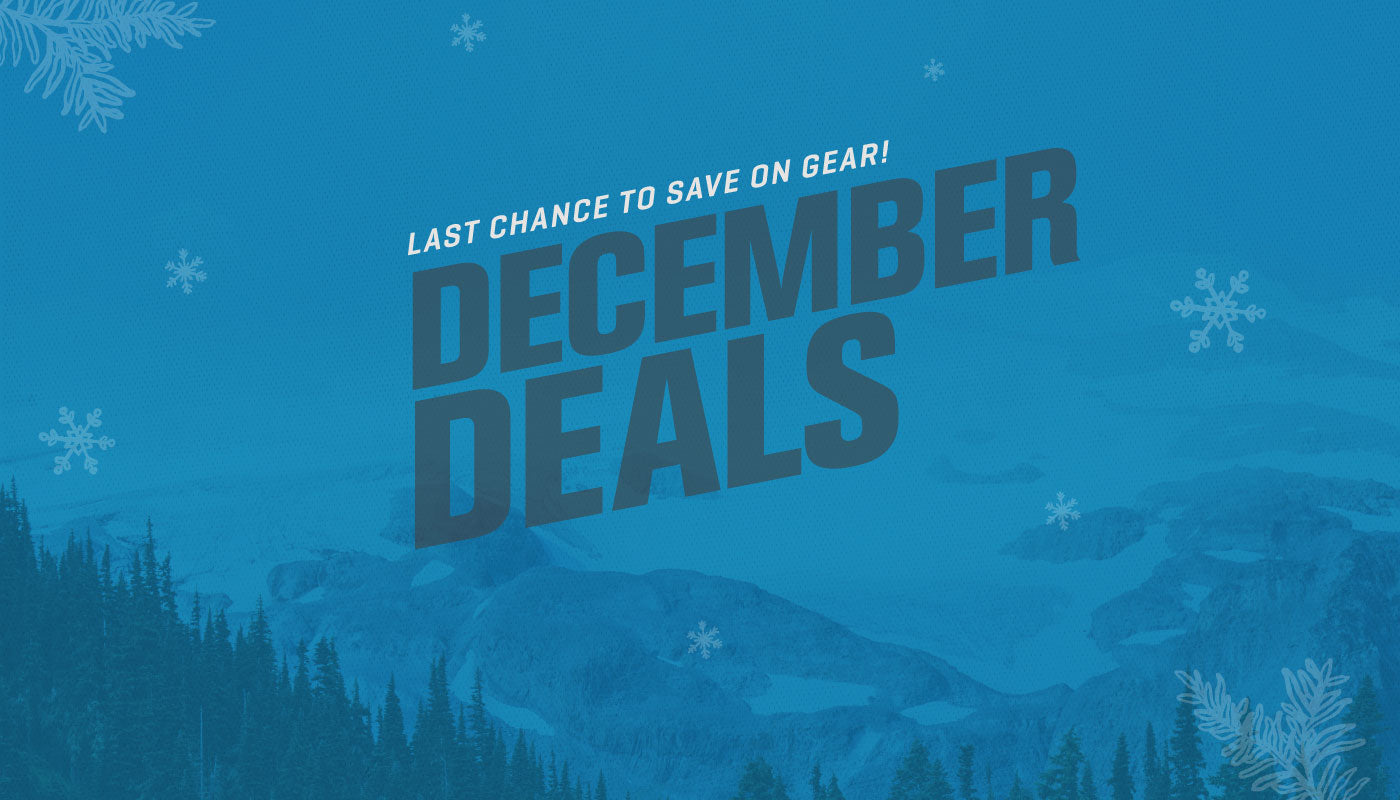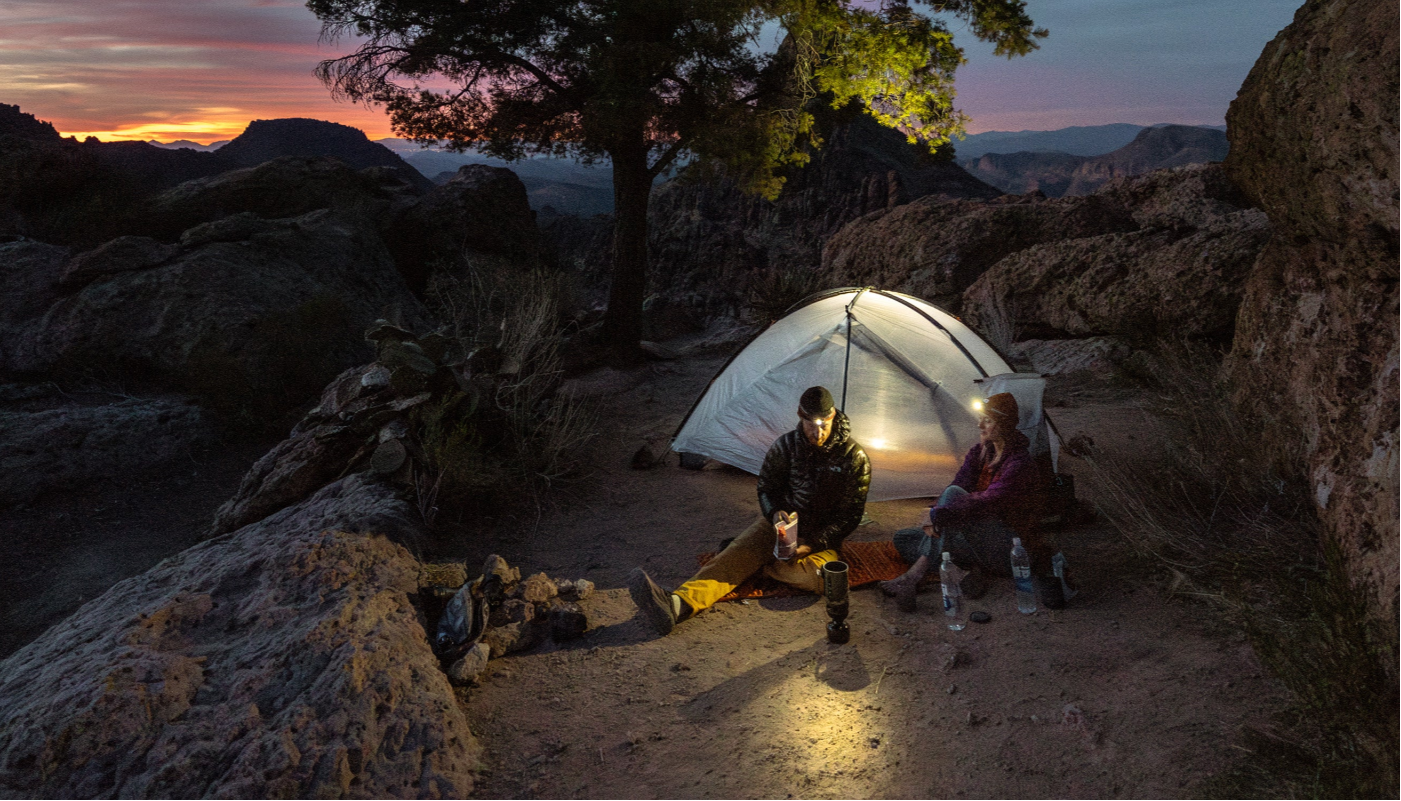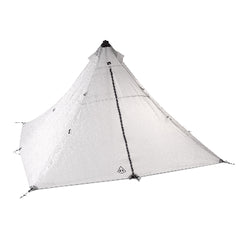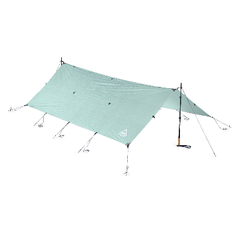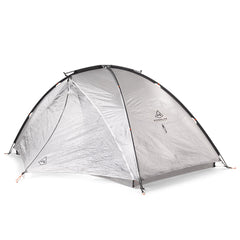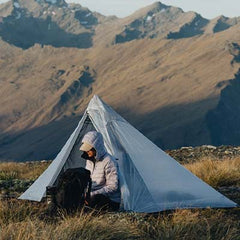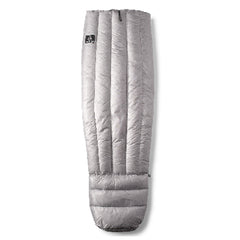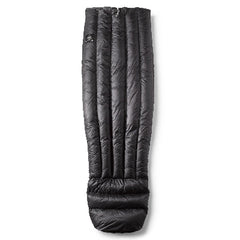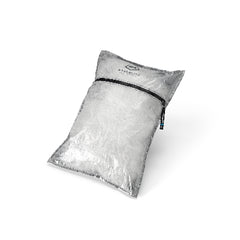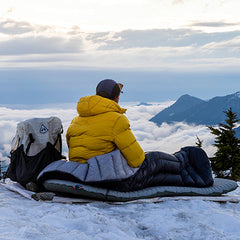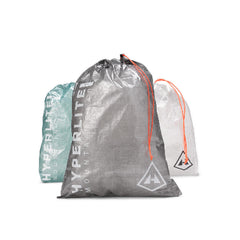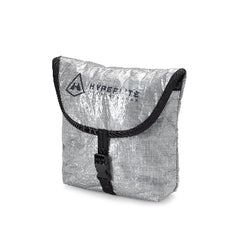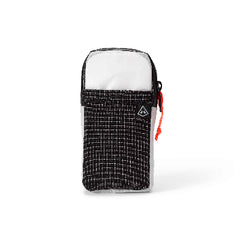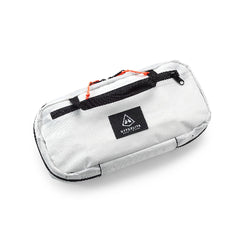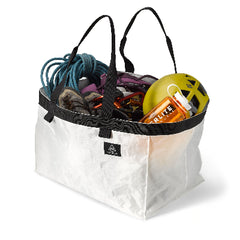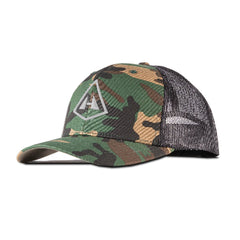Words from Cody Townsend (@codytownsend), Photos from Bjarne Salen (@bjarnesalen) / The FIFTY (@the.fifty.project)
There is always a trade-off. Every gear selection you make is a compromise in one direction or another. For instance, in backcountry skiing, there is always a trade-off when choosing your skis. Want to move uphill fast and efficiently? Well, you're going to be losing a hell of a lot of fun performance (fun-formance?) on the ski down as your 1100-gram carbon toothpicks chatter and skip under your feet. Want to power carve down that 2k' sun-kissed corn couloir? Well, you're gonna be dragging up two sheets of metal, some basalt-dampening layers, and nine pounds of wood on the way up. Now that compromise is entirely up to you—what you value in your adventure, your goals, your fun—to make the right decision.

This Trade-Off Principle applies to winter camping as well. But instead of efficiency and performance, like in the example above, the trade-off for winter camping is often Comfort vs. Weight. The lighter you go, the less comfortable you will probably be. The more comfortable you want to be, the heavier your kit will be. Ultralight Backpacking and technological advancements have started to narrow the delta between comfort and weight, but the most fundamental principle still applies, bring less stuff, and your kit will be lighter. But how do we find that sweet spot? Well, after many years of sleeping on the snow, I've found five tricks to get there.

DOUBLE UP THAT DOWN
Go with a lighter sleeping bag than the temperature rating suggests. Sure, it may be scary to go out into sub-zero temps with a 10-degree or even 20-degree bag, but there is a trick that can help minimize your pack weight while also staying warm. That trick? Sleep inside your thinly downed bag with those down pants and down jackets you brought to stay warm during the day. I've personally found that in order to pull this trick off, you need to have a slightly wider and longer bag than one that fits you snugly. I'm also here to dispel the old tale that sleeping nearly naked is the best way to stay warm in your bag. It is a way to maximize the reflective warmth of your sleeping bag, but the fact is, the more down that you have on, as long as it's still lofted, the warmer you'll be. On that point, I've always found it so weird that you shed so many of your layers to get into your -20 degree sleeping bag. So, instead of doubling up on a lot of down, use that down you're using outside to your advantage.
GEAR RECS–I've gotten so comfortable with this system I've started to bring 800-fill belay style parkas, Western Mountaineering Down Pants, and half sleeping bags like the Patagonia Alpinist Elephant Foot's bag. It's not something I'd want to spend a week's worth of nights in, but it's great for an overnight mission.

FORGO THE TENT; BRING THE 'MID
Few things make me happier than bringing an HMG UltaMid 4 that weighs a pound and a half for sleeping up to three people comfortably in the snow (though it can sleep four people, three is much more doable in the snow–FYI). So, although a full-four-season tent is often said to be warmer and more comfortable than a pyramid tent with no floor and open bases, I've found that not to be the case–unless, of course, you're in a full raging high alpine hurricane–then you might want that burly 10lb mountaineering tent. But for 95% of ski mountaineering scenarios, the main job of a tent for me is to provide shelter from precipitation, wind, and morning frost. A well-assembled, solidly staked, and dug out 'Mid configuration achieves all of that as well as any four-season tent I've found.

Plus, the comfort of waking up in your sleeping bag and being able to make coffee inside your tent walls (don't forget to vent!) while sitting up with your feet below you is one of winter camping's most joyous pleasures. Sure, bringing a 'Mid means a little more time spent digging, testing, and constructing the proper sleeping platforms away from the tent walls, but that extra time carving out your setup is well worth it. Your legs will thank you for not lugging up a four-season tent that's 10x the weight.

GEAR REC–There are plenty of mid-style shelters out there, but the HMG is my go-to. In fact, long before I began working with HMG, I purchased one for myself. If you don't feel totally comfortable with the floorless design, bring an HMG Ground Cloth to lay beneath your sleeping pads.

EAT COLD, USE FUEL ONLY FOR WHAT YOU NEED
Fuel is water in the winter. Most winter camping scenarios involve zero running water. Yet you're surrounded by a sea of frozen liquid that, when heated, becomes an abundant source. But, depending on your stove system, that water you need becomes severely limited by the amount of snow you can melt.

Too often, I've realized that my desire to have a hot meal for breakfast and dinner, along with hot water for coffee and tea, quickly zaps my fuel supply. Consider that a large full-size MSR Isobutane canister weighs almost 1.5 lb. Being able to trim your fuel usage to a smaller canister size, let's say the 4oz one, will save you a pound, drastically reducing the weight of your pack. For me, I reserve a boil for one cup of coffee in the morning and one dehydrated meal at night. Everything else I eat is cold, pre-prepared food. The rest of my snow melting is then strictly reserved for water consumption. Oh, and yes, I don't boil my drinking water 100% of the time. I know, I know. That's not what's recommended and not safe in many areas. But unless I'm in heavily trafficked areas like Rainier or Denali, where bacteria contamination in the snow is a true hazard, I do not boil my snow water, and so far, I've never gotten sick!

GEAR REC–I use many different stoves for many different mountain adventures, but ultimately, the most efficient stove I've found is the MSR Reactor. Though it's heavier than other options, its heat transfer efficiency is so much greater than Pocket Rockets and WindBurners that the extra weight of the stove ends up saving a ton of weight on fuel. When I've used Pocket Rockets and WindBurners and other stoves of the such, I tend to burn through fuel trying to get snow water to a boil, which can then leave you in a dangerous place of running out of fuel and, thus, running out of water. Oh, and don't forget to sleep with your canisters in your sleeping bag. Keeping them warm helps keep them efficient.

HEAVY FOOD! NUTRIENT-DENSE FOOD IS GOOD FUEL
Food is one of the biggest sources of weight you can bring on a backcountry adventure. Typically, I'm packing about 2.5 lb of food per day. Sometimes more, sometimes less, but that's what I've found to be my average. And sure, eating gummy bears, gummy blocks, Swedish Fish, and other junk food is one of life's greatest joys during backcountry travel, but most sugary backcountry snacks don't pack the caloric density that their weight penalty costs. They'll give you sudden–but quickly-depleting energy boost. These days, I've cut back on a ton of sweets in the backcountry and rely on heavy caloric foods that power my adventure for a long time. These days, my backcountry food consists of nuts, seeds, nut butters, butter, meats, and cheeses. Often, I'll open up my dry food packet before going out, throw in a 1/4 block of butter, reseal it, and savor the flavor in that night's meal.
GEAR REC–Check out Caloric Food Density Charts and plot accordingly. I will add one thing; you may have to train and adapt to this style of diet weeks or months before heading out. In the summer, I do not eat any processed sugar and can run or bike for hours and hours without as much as a single bite of food. Your body wants and prefers to power itself on rapidly burning sugars. Stop giving it sugar, though, and it'll start learning how to power you with slow-burning fats. Not only will you get skinnier, but you'll also be able to go way further on less food.

LIGHTEN UP THOSE FEET, INCREASE YOUR EFFICIENCY BY SIX TIMES
It's an old adage, but it's a true one, nonetheless. Studies have shown that carrying the same amount of weight on your feet requires 4.7 to 6.4 times as much energy as carrying that same weight on your back. So, if you focus on one thing, focus on getting a lighter ski, boot, binding, and skin set up to drastically increase your efficiency. Again, there is a trade-off there–especially when being required to ski with a heavy pack in either tough snow or steep, exposed conditions. But ultimately, thinking about what you're dragging up the mountain on your feet will save you a ton in fuel, food, and water weight.

